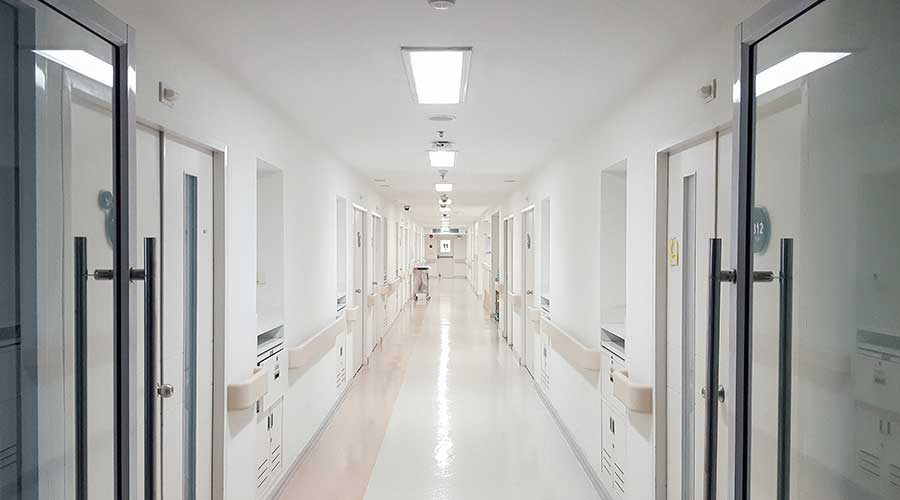Lighting a Path: How Lights Help with Wayfinding

Lighting manufacturers discuss how lights can be used for wayfinding applications.
Healthcare facilities can be like labyrinths for people to get lost in, which is why wayfinding is a critical feature to have. Fortunately, elements such as signage and lighting can be helpful for patients and staff to use to find their way. In this manufacturer roundtable, Healthcare Facilities Today speaks with lighting manufacturers about how lights can be used for wayfinding purposes.
How can lighting be used for wayfinding in a healthcare facility?
“Traditional healthcare wayfinding systems leverage a combination of symbols, signage placement and color coding to orientate people to unfamiliar spaces. The advancement of modern lighting technologies provides additional advantages, such as the use of bright, clear lighting on focal points of emphasis to serve as key visual references and landmarks. Directional lighting can highlight and point people to important locations like nursing stations, emergency rooms and patient recovery rooms. Indirect lighting can be applied in unique ways on corridor walls and ceilings to better guide traffic successfully through unfamiliar spaces. The use of RGB color lighting also provides tremendous guidance potential when successfully paired with clearly color-coded destination locations.”
— Rob Schmitz, marketing director, Toggled
“With advanced controls and LED technology, facilities can easily manage the lighting in areas like hallways, patient rooms, surgical suites and parking lots. Facility managers can set the lights to adjust brightness at different times of the day or in response to specific events. For example, lights leading to certain departments could be made brighter or adjusted during visiting hours to help visitors find their way. Additionally, lights with motion sensors will only turn on to light up paths when people approach, which is helpful in low-traffic areas.
A critical aspect of lighting is the use of signage and emergency lighting. Backlit and edge-lit signs are essential for guiding people through large healthcare facilities. Additionally, illuminated exit signs and emergency lighting units are integrated into building systems to ensure well-lit pathways during power outages.”
— Ron Farmer, chief executive officer, US LED
“Lighting can play a crucial role in wayfinding within a healthcare facility by integrating advanced technologies into light fixtures. Traditionally, lighting can be used to visually differentiate different areas or wings by color coding. For instance, all light fixtures in the cardiac wing might be red, helping patients and staff easily identify where they are based on the lighting scheme.
With the integration of modern technology, lighting can go beyond simple visual cues. Beacons or real-time location services can be embedded into luminaires, allowing healthcare facilities to track equipment and personnel in real time. This enhances operational efficiency by enabling staff to quickly locate critical equipment or monitor traffic flows within the facility. It can even be used to analyze how long it takes staff members, such as nurses, to travel between different points, which can help optimize workflow and improve patient care.
Essentially, lighting becomes both a navigational aid and a tool for operational management, improving both patient experience and staff efficiency.”
— Tommy Nichols, LC, business development director for healthcare, Acuity Brands
Jeff Wardon, Jr., is the assistant editor for the facilities market.
The post "Lighting a Path: How Lights Help with Wayfinding" appeared first on Healthcare Facilities Today

